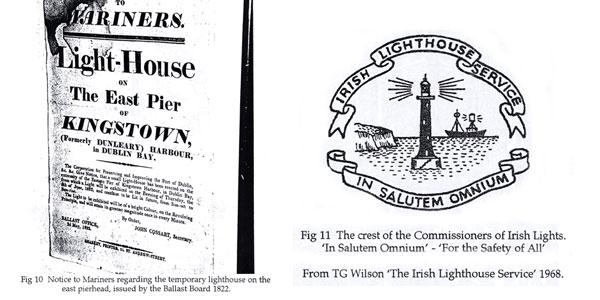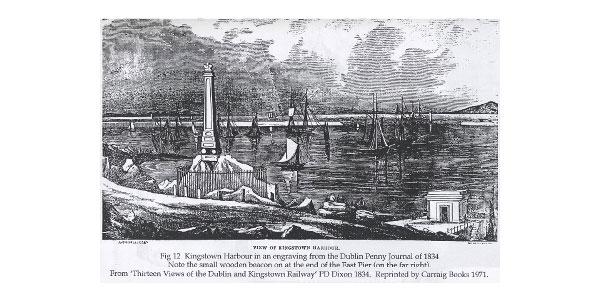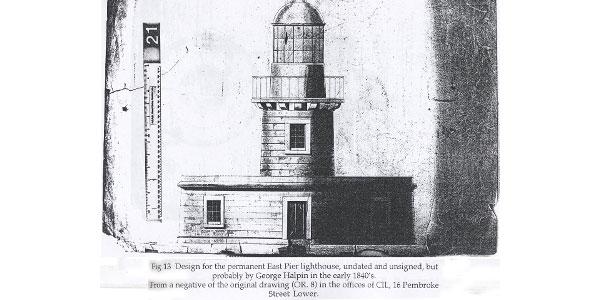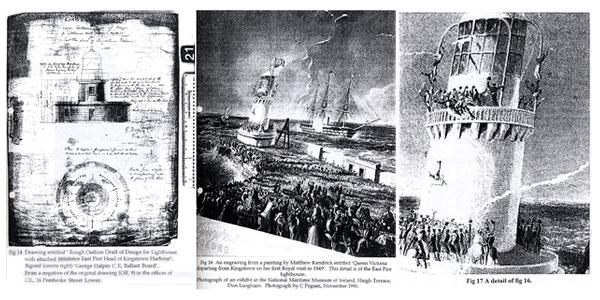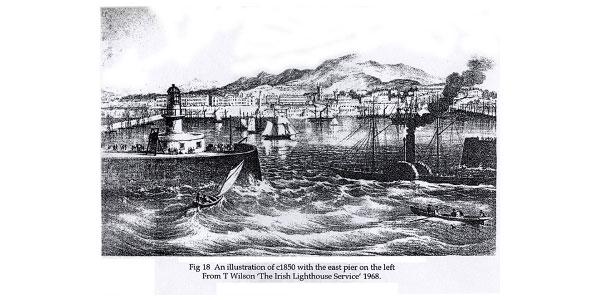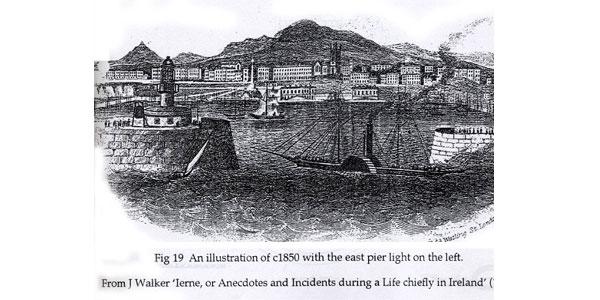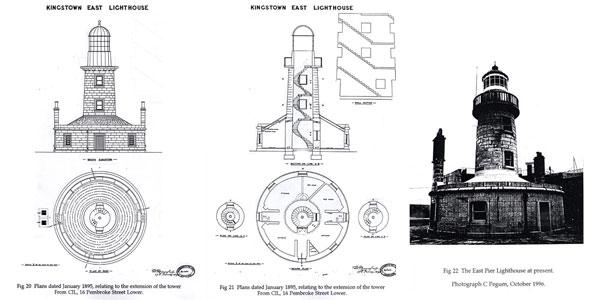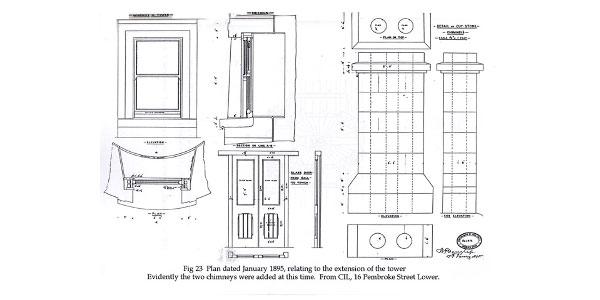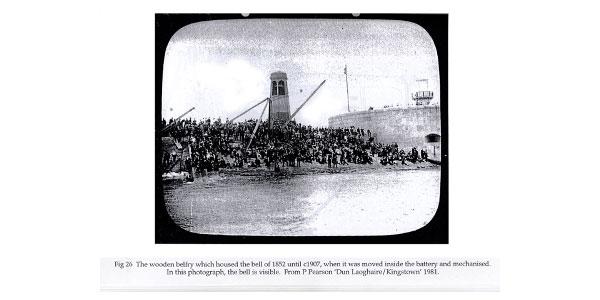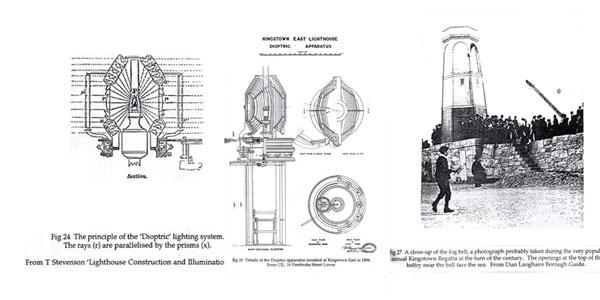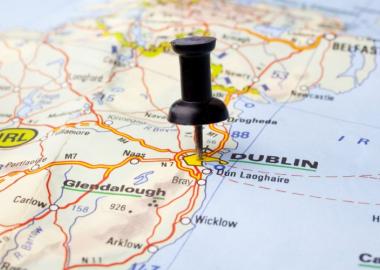The Lighthouse
As the East Pier took shape, a wooden beacon was placed at its extremity to warn shipping, and moved away from the shore as work progressed (fig 10). The Corporation for Improving and Preserving the Port of Dublin (est. 1786) also known as the Ballast Board, had assumed the responsibility for lighting the Irish coast in 1810. Later, these two functions were separated, when the Commissioners of Irish Lights (CIL) were established in 1854 (fig 11). The small lantern (on the end of the east pier while the pierheads were being discussed) can be seen in an engraving of 1834 from the Dublin Penny Journal (fig 12).
In the Commissioners of Public Works Report of 1845 it is recorded “On the east pier-head the new lighthouse is considerable advanced, and will be completion the course of the coming season” (7). This permanent lighthouse and dwelling was designed by Chief Engineer with the Ballast Board, George Halpin, with some alterations by Jacob Owen (figs 13 & 14). The cost of the granite tower was £937, paid to the contractors. The light here was established on 1st October 1847, 41 feet above high water, and of 12,000 candle-power. Whereas Halpin’s plans show the ‘Draft’, a number of contemporary illustrations of c.1850 portray the executed model (figs 16 – 19).
As early as 1877 the CIL received suggestions for improving the power and range of the Kingstown lights. In 1892, the City of Dublin Steam Packet Company, which had a monopoly on the Holyhead-Kingstown mail route, complained to the Commissioners of the poor harbour lighting. An Inspection Committee was established and alterations recommended. The tower on the east pier was heightened by 12 feet (figs 20-23), thus casting a beam on the Mugglin rocks off Dalkey for the first time. The ‘dioptric’ lighting system was installed, which involves the refraction of light rays from a source (an oil wick lamp), using glass prisms, so that they are parallelised and aimed at the horizon (ie the approaching mariner) (figs 24 & 25).
The fog bell seen in Fig. 19 was replaced in September 1852 by a tall wooden belfry (figs 26 & 27) with a new bell inscribed SHERIDAN DUBLIN MAKER 1852. This manually operated device was succeeded by a reed horn, the firing of a gun, and a mechanised bell (from 1907).
In 1944 a diaphone fog signal was installed (figs 32 & 33), consisting of a piston driven by compressed air. In July 1968 the East Pier station switched from vapourised paraffin to electricity, and became unmanned. The new candle-power was 226,000.




